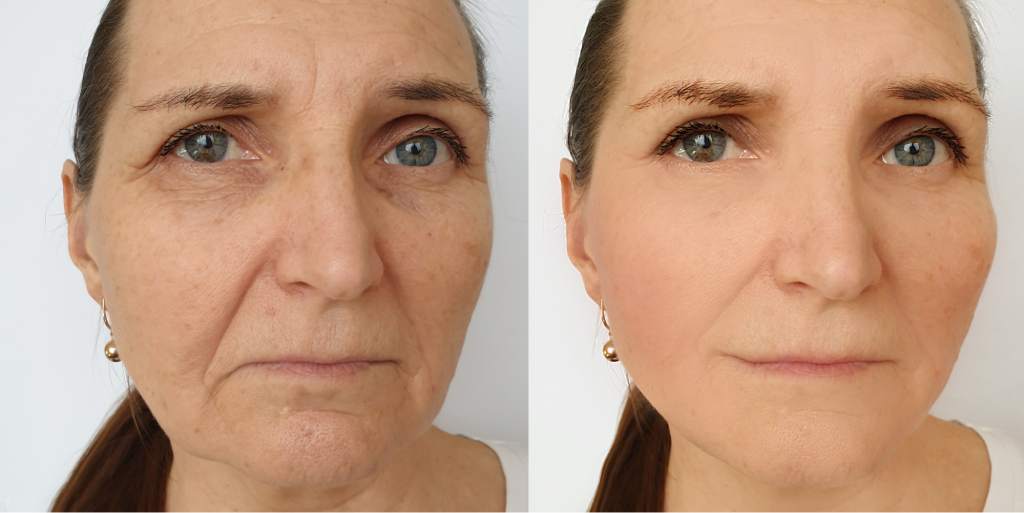The quest for radiant, youthful skin often leads us to explore various treatments. If you’ve been considering options to improve your skin texture and reduce signs of aging, you might have come across microneedling and microchanneling.
Both are popular skin rejuvenation techniques, but understanding the key differences between them is important to choosing the best treatment for your needs.
Keep reading and learn more about what sets these treatments apart and how each can benefit your skin.
What is Microneedling?
Microneedling involves creating controlled micro-punctures in the skin using a roller or pen device equipped with fine needles. This process stimulates the body’s natural healing response, leading to increased collagen production and cellular renewal.
The result is improved skin texture, tone, and elasticity. Microneedling devices come with adjustable needle depths, allowing practitioners to target various skin concerns, from superficial fine lines to deeper acne scars.
What Can Microneedling and Microchanneling Improve?
Both microneedling and microchanneling are powerful treatments designed to rejuvenate your skin. These procedures share similar goals and can help enhance your skin’s appearance by targeting a variety of common concerns:
Acne Scars
Reduce the visibility of acne scars, promoting a smoother and more even skin texture.
Fine Lines and Wrinkles
Diminish fine lines and wrinkles, helping to restore a youthful look to your skin.
Stretch Marks
Improve the appearance of stretch marks, making them less noticeable over time.
Photoaging
Combat the effects of photoaging, such as sunspots and pigmentation, for a more even skin tone.
Poor Skin Texture
Enhance overall skin texture, resulting in a smoother and more refined complexion.
Both treatments stimulate the skin’s natural healing process, promoting collagen production and cellular renewal. Whether you choose microneedling or microchanneling, you can expect a noticeable improvement in the quality and appearance of your skin.
Microneedling vs. Microchanneling: What’s The Difference?
With both microneedling and microchanneling offering similar benefits, making an informed decision requires understanding their distinctions.
Here’s a breakdown of how these two treatments compare in terms of devices, depth, and other important aspects:
Treatment Devices
Microneedling utilizes devices equipped with needles, either in the form of rollers or pens. These needles vary in length and can be adjusted based on the treatment area and the specific skin concern.
Microchanneling, on the other hand, employs devices with fine filaments instead of needles. These filaments create tiny channels in the skin, allowing for a gentler approach compared to traditional microneedling.
Depth of Penetration
Microneedling devices offer adjustable needle depths, making them versatile for targeting concerns at different skin layers. For instance, deeper needle settings can address more pronounced wrinkles and acne scars by reaching the dermis.
Microchanneling primarily focuses on the epidermis, creating channels within the superficial skin layers. This makes microchanneling a potentially gentler option, ideal for those with sensitive skin or concerns about deeper penetration.
Delivery of Serums
While microneedling can be performed with or without topical serums, microchanneling treatments often incorporate serums to enhance the benefits.
The microchannels created during the treatment facilitate deeper absorption of these serums, delivering essential nutrients and promoting faster, more effective skin rejuvenation.
This dual approach of physical stimulation and topical nourishment sets microchanneling apart from traditional microneedling.
Downtime and Recovery
Both treatments involve minimal downtime, but there are differences in the recovery process. Microneedling can result in mild redness, swelling, and occasional scabbing, which typically resolves within a few days.
Microchanneling, due to its gentler approach, usually leads to less downtime and milder side effects. Patients can often resume their daily activities sooner, making microchanneling a convenient option for those with busy schedules.
Choosing the Right Treatment
Selecting the appropriate skin rejuvenation treatment between microneedling and microchanneling involves a careful consideration of your specific skin concerns, desired outcomes, and personal preferences.
Each treatment offers unique benefits, and understanding these can help you make an informed decision that best suits your needs.
Assessing Skin Concerns
The first step in choosing the right treatment is to assess your specific skin concerns. Microneedling is highly effective for treating deeper wrinkles, acne scars, and stretch marks due to its ability to penetrate various skin layers. If you have pronounced signs of aging or significant scarring, microneedling’s deeper penetration might be the better option.
On the other hand, microchanneling is ideal for addressing more superficial skin concerns such as fine lines, uneven skin tone, and overall skin rejuvenation. Its gentler approach makes it suitable for individuals with sensitive skin or those who are new to cosmetic treatments.
The microchannels created during the procedure enhance the absorption of topical serums, providing additional nourishment and hydration to the skin.
Considering Skin Sensitivity
Your skin’s sensitivity is another crucial factor to consider. Microneedling, with its adjustable needle depths, can be customized to different skin types, but it may cause more discomfort and downtime, especially for those with sensitive skin.
If you have a low tolerance for pain or are concerned about recovery time, microchanneling might be a more comfortable choice. The fine filaments used in microchanneling create less trauma to the skin, resulting in minimal discomfort and faster recovery.
Evaluating Desired Outcomes
Understanding your desired outcomes will also guide you in choosing the right treatment. If your primary goal is to achieve significant improvement in deep wrinkles, acne scars, or stretch marks, microneedling’s ability to stimulate collagen production at deeper skin levels will be advantageous.
Conversely, if you aim for overall skin rejuvenation, improved skin texture, and enhanced serum absorption with minimal downtime, microchanneling is the way to go.
Combining Treatments for Comprehensive Results
In some cases, combining microneedling or microchanneling with other treatments can offer more comprehensive results.
For instance, pairing microneedling with chemical peels or laser treatments can address multiple skin concerns simultaneously, such as pigmentation issues and deeper wrinkles.
Similarly, combining microchanneling with hydrating and nourishing serums can maximize the treatment’s benefits, providing a multi-faceted approach to skin rejuvenation.
Suitability for Different Concerns
Ready to see which treatment suits your needs best? Here’s a breakdown of how microchanneling and microneedling address various concerns, from wrinkles and scars to overall rejuvenation:
Microneedling Applications
Microneedling is particularly effective for addressing deeper wrinkles, acne scars, and stretch marks.
The adjustable needle depths allow for targeted treatment of these more stubborn issues, making it a versatile option for comprehensive skin rejuvenation.
The deeper penetration stimulates significant collagen production, resulting in firmer, smoother skin.
Microchanneling Applications
Microchanneling is suitable for concerns like fine lines, uneven skin tone, and overall skin rejuvenation with minimal downtime.
Its gentler approach makes it ideal for those with sensitive skin or those looking for a quick, effective treatment with less recovery time.
The enhanced absorption of topical serums during microchanneling also contributes to improved skin texture and tone.
Safety Considerations and Potential Side Effects
Choosing our expert provider is essential for both microneedling and microchanneling treatments. Potential side effects of both procedures include temporary redness, swelling, or rare infections.
Using sterile techniques and following proper aftercare instructions can minimize these risks. Discussing any concerns with our provider before undergoing treatment can help guarantee a safe and effective experience.
Alternative Skin Rejuvenation Options
While microneedling and microchanneling are effective treatments, there are also non-needle options available for skin rejuvenation. Chemical peels, for example, can exfoliate the skin and promote cell turnover, improving skin texture and tone.
Laser treatments can address pigmentation issues and stimulate collagen production. Consulting with a professional can help determine the best approach for your individual needs, ensuring that you achieve the desired results.
At New Beauty Company Aesthetics in St. Johns, FL, we specialize in personalized skin rejuvenation treatments. Our experienced team can help you decide between microneedling and microchanneling so you can receive the best care tailored to your needs.
Call us now to schedule your appointment!


